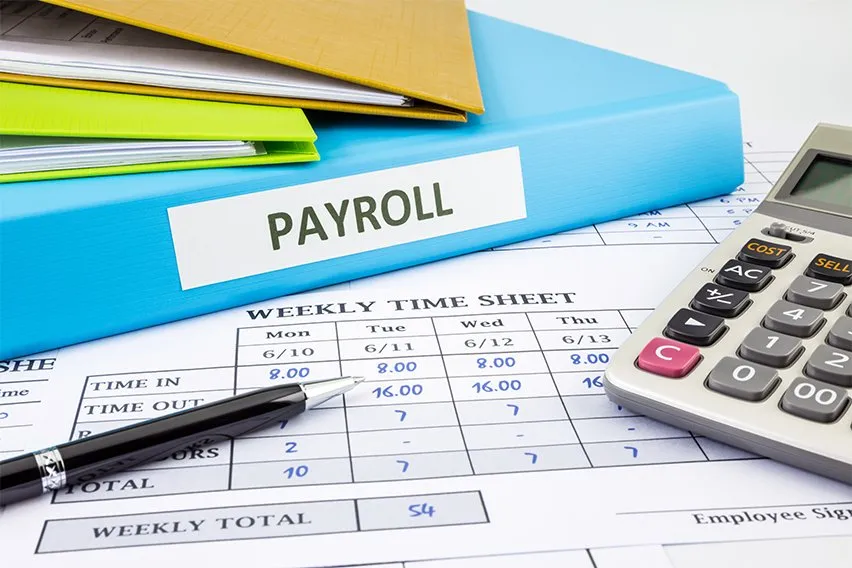What Is a Payroll Journal Entry & How to Book an Entry?

Payroll accounting can be pretty complicated. We break down what payroll entries are and how to make one to process your payroll.
Whether you are paying one employee or dozens of employees, you need to make a payroll journal entry.
As a small business owner, payroll accounting can be a headache. Hopefully we can simplify things today! Let’s start with definitions.
Here’s What We’ll Cover:
What Is a Payroll Journal Entry?
Payroll Journal Entry Examples
What Is a Payroll Journal Entry?
A payroll journal entry is a record of your employee wages. It sounds deceptively simple but buckle up – it’s all downhill from here!
There are a few type of payroll journal entries to consider:
- Primary payroll journal entry
Also known as an initial recording, this first entry is very important. It covers the gross wages, withholdings and net pay.
For this you will always:
– Debit wage expense for gross payroll
– Credit each withholding account as they are all liabilities.
Tax withholdings could be federal income tax, state income tax etc. Deductions for benefits could be health insurance premiums, worker compensation insurance, retirement plans etc.
– Credit cash for net payroll
We will go through an example in the next section.

- Employer’s payroll tax expense
This is where you calculate the payroll expenses you may owe.
For this you will always:
– Debit payroll tax expense for the total of all payroll taxes that employer pays.
– Credit each payroll tax expense. These are liabilities e.g FUTA, SUTA, OASDI etc
The debit will be the sum of your credits. The payroll costs ledger has to be balanced.
Payroll Journal Entry Examples
Creating Payroll General Ledger Entries
For the first kind of payroll journal entry, it is important to realize that you only do one entry for all employees. You don’t make a journal entry for each employee individually.
An example of an initial payroll entry would look like this:
Wages Expense $1,825.00
FICA payable (social security and medicare) $114.39
FIT payable (federal income taxes) $174
SIT payable (state income taxes) $50
Insurance $191
Net Wages Payable $1,288.26
As you can see, the gross wage expense is at the top as a debit. Then the payroll deductions are credited as withholding amounts. These are withholding until they are actually paid. But you must account for them now so that it appears correctly in your payroll records.
At the end you have the net income payable to your employees.

Creating an Employer Taxes Payroll Journal Entry
Now let’s look at the payroll tax accrual side. We’ll use the same example as above. The $1845 of gross net pay needs to be broken down into taxable income. Here is what a payroll journal entry would look like for Employer’s payroll tax expenses:
Payroll tax expense $190.89
FUTA tax payable (Federal Unemployment Taxes) $3.69
SUTA payable (State Unemployment Taxes) $46.06
FICA payable (social security matches the employee deductions above) $114.39
Your payroll tax expense as a debit must equal the total of your tax liabilities. The ledger has to be balanced.
When you actually go to deposit your tax payments, these payroll liabilities come off your books.
Key Takeaways
Creating a payroll journal entry is a key part of business accounting. If you use excellent payroll software, you can simplify the process a lot. The system will automatically calculate the tax liabilities and gross pay for you. It will generate payroll journal entries on your behalf that you can present at tax time.
If you don’t have a trusty bookkeeper, accounting software can save you here.
RELATED ARTICLES

 What Is a Payroll Report? 5 Types of Payroll Reports
What Is a Payroll Report? 5 Types of Payroll Reports An Extensive Guide to Payroll Forms
An Extensive Guide to Payroll Forms 4 Best Payroll App Selections for Small Business
4 Best Payroll App Selections for Small Business Top 5 Online Payment Solutions
Top 5 Online Payment Solutions ACH vs Wire: Difference Between ACH and Wire Transfer
ACH vs Wire: Difference Between ACH and Wire Transfer What Is PayPal Cash Card?
What Is PayPal Cash Card?